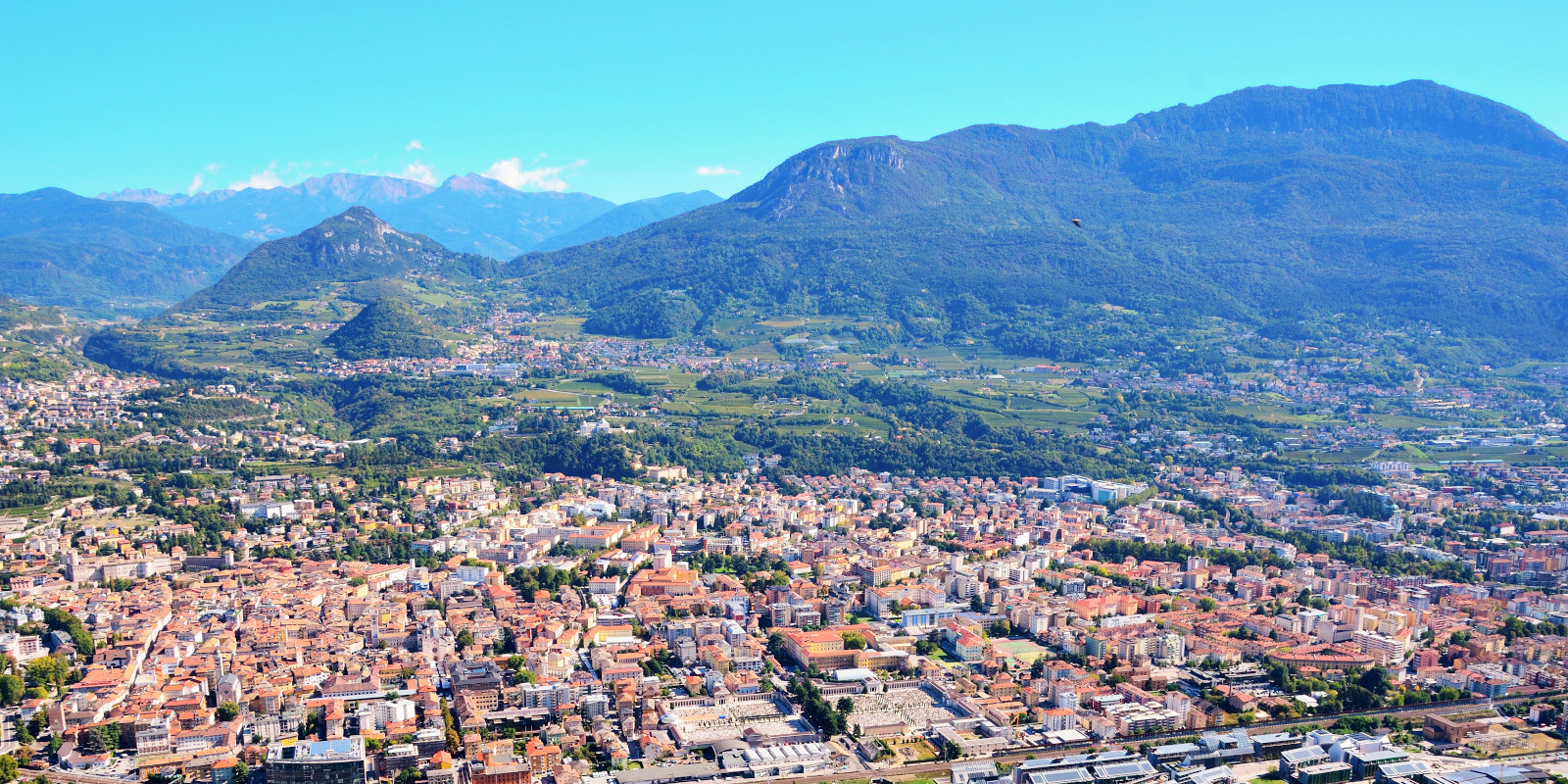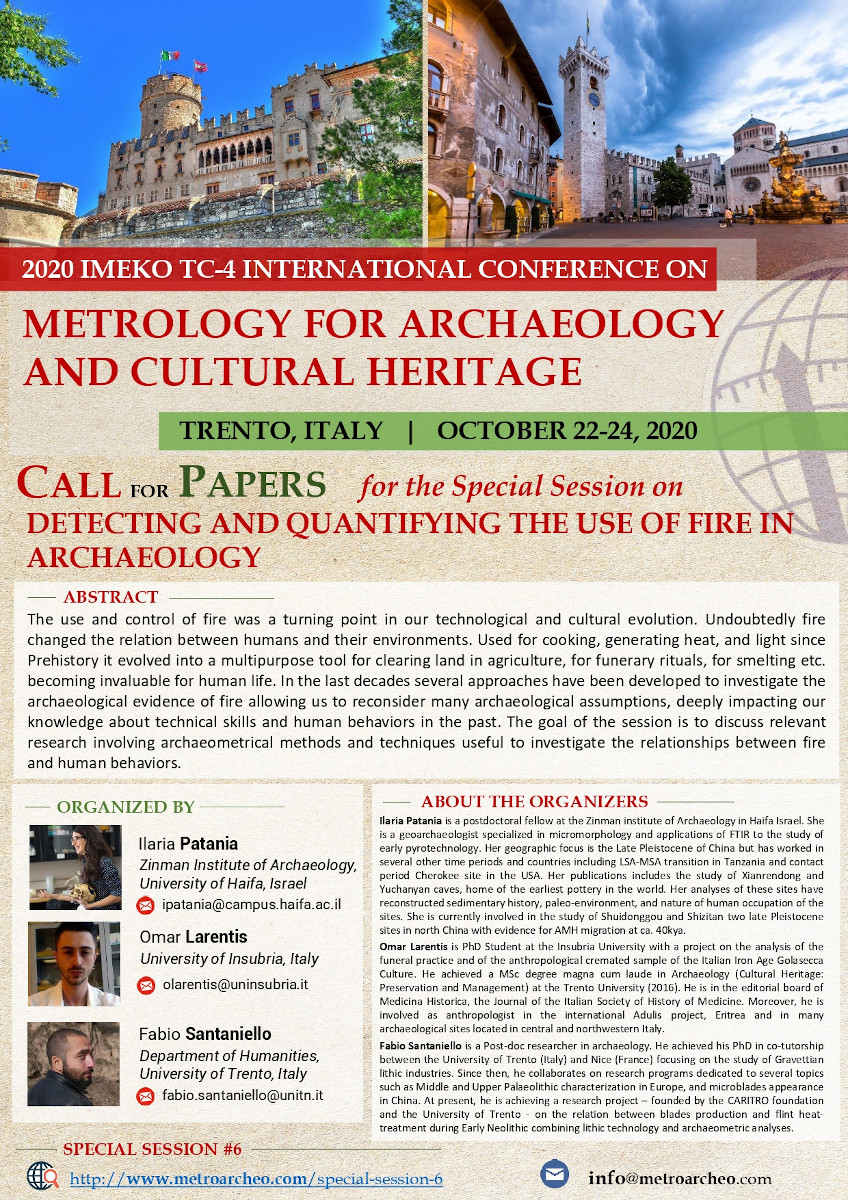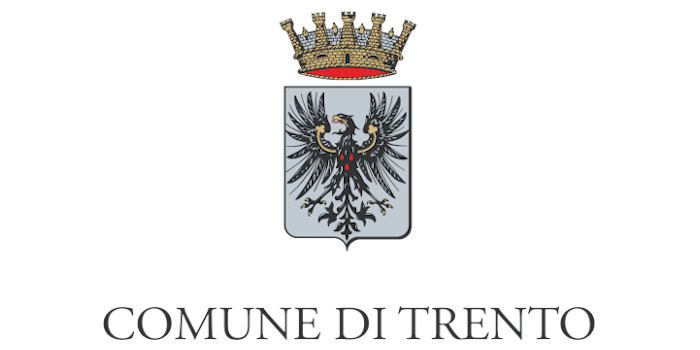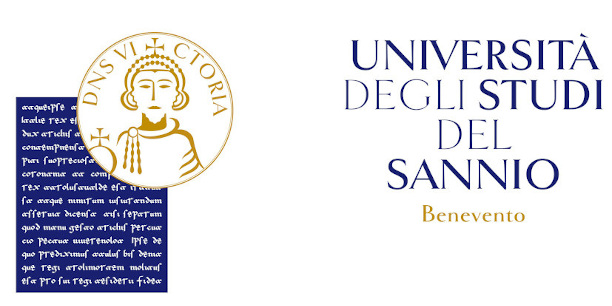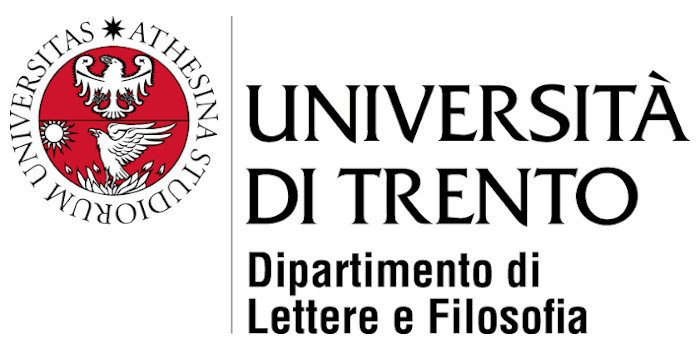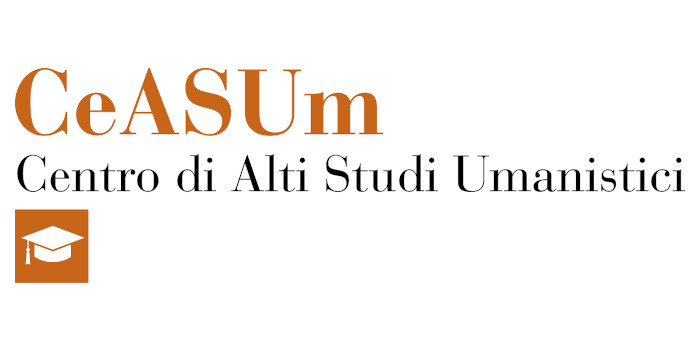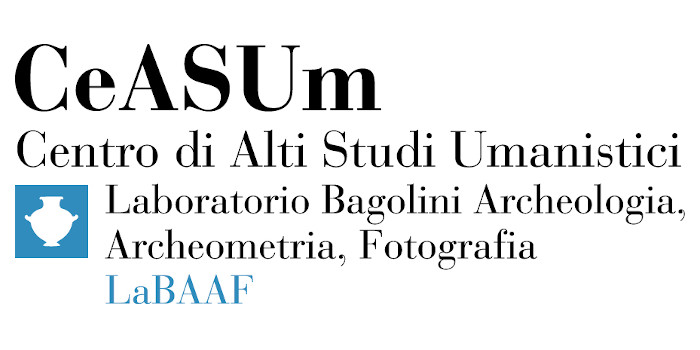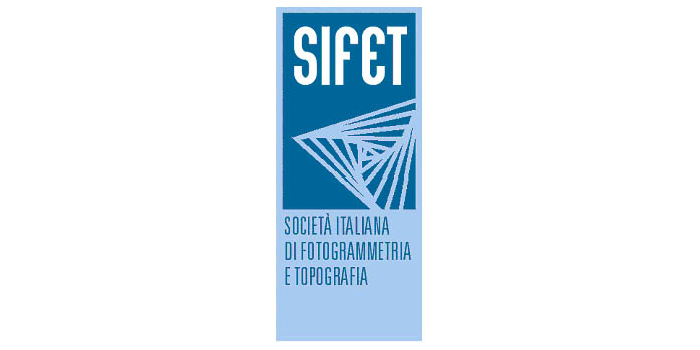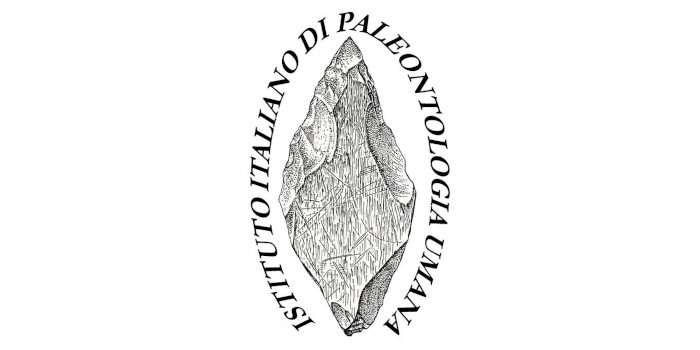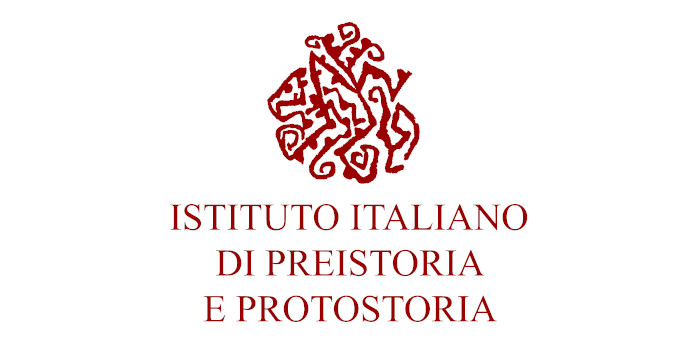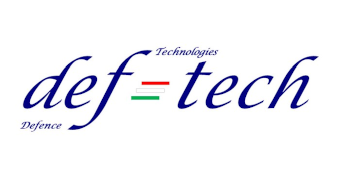Detecting and quantifying the use of fire in Archaeology
ORGANIZED BY
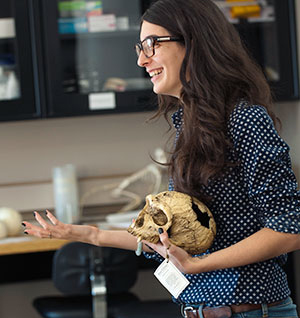
Ilaria Patania
Zinman Institute of Archaeology, University of Haifa, Israel

Omar Larentis
Centre of Research in Osteoarchaeology and Paleopathology, University of Insubria, Italy
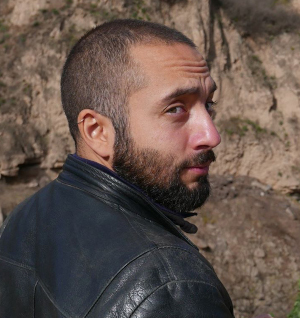
Fabio Santaniello
Department of Humanities, University of Trento, Italy
ABSTRACT
The use and control of fire was a turning point in our technological and cultural evolution. Undoubtedly fire changed the relation between humans and their environments. Used for cooking, generating heat, and light since Prehistory it evolved into a multipurpose tool for clearing land in agriculture, for funerary rituals, for smelting etc. becoming invaluable for human life. In the last decades several approaches have been developed to investigate the archaeological evidence of fire allowing us to reconsider many archaeological assumptions, deeply impacting our knowledge about technical skills and human behaviors in the past. The goal of the session is to discuss relevant research involving archaeometrical methods and techniques useful to investigate the relationships between fire and human behaviors.
ABOUT THE ORGANIZERS
Ilaria Patania is a postdoctoral fellow at the Zinman institute of Archaeology in Haifa Israel. She is a geoarchaeologist specialized in micromorphology and applications of FTIR to the study of early pyrotechnology. Her geographic focus is the Late Pleistocene of China but has worked in several other time periods and countries including LSA-MSA transition in Tanzania and contact period Cherokee site in the USA. Her publications includes the study of Xianrendong and Yuchanyan caves, home of the earliest pottery in the world. Her analyses of these sites have reconstructed sedimentary history, paleo-environment, and nature of human occupation of the sites. She is currently involved in the study of Shuidonggou and Shizitan two late Pleistocene sites in north China with evidence for AMH migration at ca. 40kya.
Omar Larentis is PhD Student at the Insubria University with a project on the analysis of the funeral practice and of the anthropological cremated sample of the Italian Iron Age Golasecca Culture. He achieved a MSc degree magna cum laude in Archaeology (Cultural Heritage: Preservation and Management) at the Trento University (2016). He is in the editorial board of Medicina Historica, the Journal of the Italian Society of History of Medicine. Moreover, he is involved as anthropologist in the international Adulis project, Eritrea and in many archaeological sites located in central and northwestern Italy.
Fabio Santaniello is a Post-doc researcher in archaeology. He achieved his PhD in co-tutorship between the University of Trento (Italy) and Nice (France) focusing on the study of Gravettian lithic industries. Since then, he collaborates on research programs dedicated to several topics such as Middle and Upper Palaeolithic characterization in Europe, and microblades appearance in China. At present, he is achieving a research project – founded by the CARITRO foundation and the University of Trento - on the relation between blades production and flint heat-treatment during Early Neolithic combining lithic technology and archaeometric analyses.
